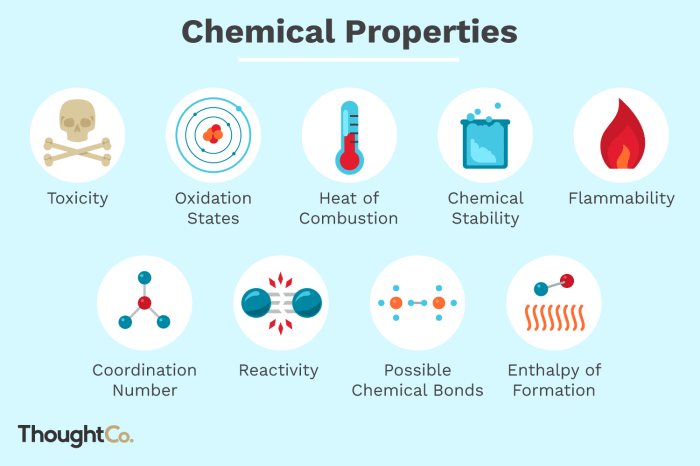Introducing the Worksheet on Physical Properties of Matter, a comprehensive resource that delves into the fascinating world of matter’s defining characteristics. This worksheet empowers learners to unravel the significance of physical properties in diverse scientific disciplines, providing a solid foundation for comprehending the nature of matter.
Through engaging explanations, hands-on activities, and interactive demonstrations, this worksheet unravels the intricate tapestry of physical properties, revealing their role in classifying matter and their practical applications in everyday products and technologies.
1. Introduction: Worksheet On Physical Properties Of Matter

Physical properties of matter are observable characteristics that can be used to identify and classify different substances. Understanding these properties is crucial in various scientific fields, including chemistry, physics, and materials science.
2. Classification of Physical Properties
Physical properties can be classified into different types, including:
- Density: Mass per unit volume
- Solubility: Ability to dissolve in a solvent
- Conductivity: Ability to conduct heat or electricity
These properties can be used to classify matter into different categories, such as metals, non-metals, and liquids.
3. Measurement and Units, Worksheet on physical properties of matter
Physical properties can be measured using various methods and units. It is important to use appropriate units and conversions to ensure accurate and consistent measurements.
- Density: Measured in grams per cubic centimeter (g/cm³)
- Solubility: Measured in grams per liter (g/L)
- Conductivity: Measured in Siemens per meter (S/m)
4. Applications in Everyday Life
Physical properties of matter play a crucial role in everyday products and technologies. For example:
- Density: Determines the buoyancy of objects in water
- Solubility: Affects the absorption and bioavailability of nutrients
- Conductivity: Enables the flow of electricity in wires
Considering physical properties is essential when designing and using these products.
5. Table of Physical Properties
A comprehensive table summarizing the physical properties of common substances is provided in the worksheet.
The table includes properties such as density, melting point, boiling point, and solubility.
6. Interactive Demonstration
An interactive demonstration is included in the worksheet to allow users to explore the physical properties of different materials.
Visuals and simulations are used to enhance the learning experience.
7. Hands-on Activities
Step-by-step instructions for hands-on activities that demonstrate physical properties are provided in the worksheet.
Safety precautions and disposal guidelines are included.
8. Glossary of Terms
A glossary of terms related to physical properties of matter is included in the worksheet.
Clear definitions and examples are provided.
Clarifying Questions
What are physical properties of matter?
Physical properties are observable and measurable characteristics of matter that do not involve any chemical changes.
How are physical properties used in everyday life?
Physical properties are used in a wide range of applications, from designing materials for specific purposes to understanding the behavior of substances in various environments.
What is the importance of understanding physical properties of matter?
Understanding physical properties is crucial for predicting the behavior of matter, developing new materials, and comprehending the interactions between different substances.